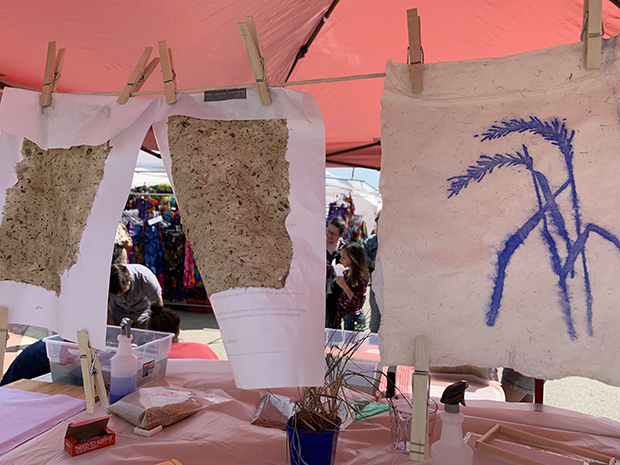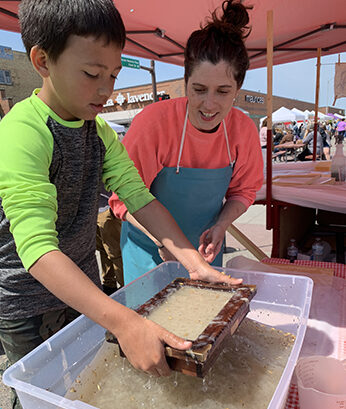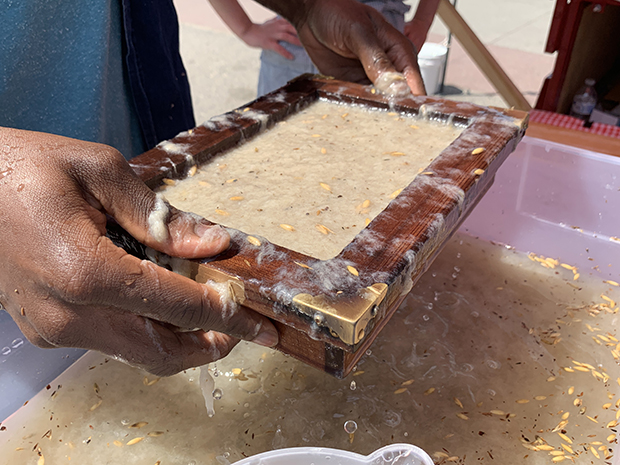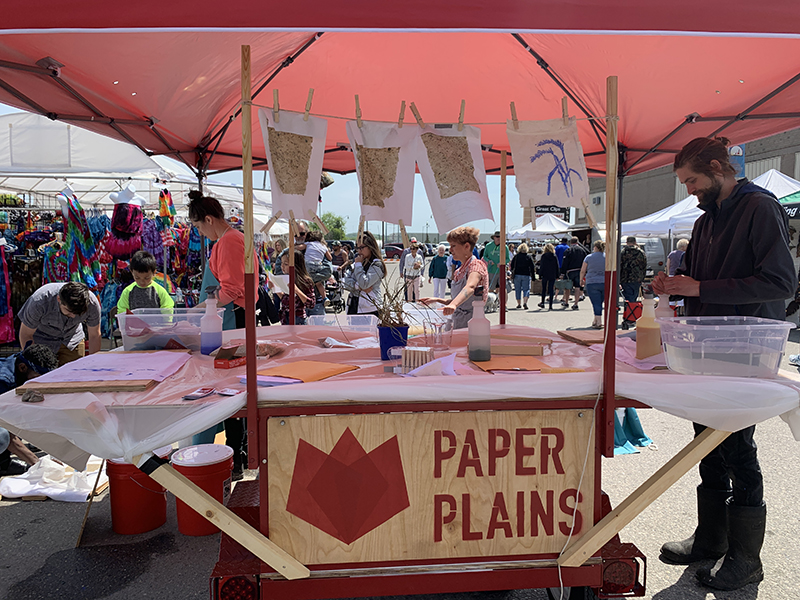They’re magicians, of sorts.
They turn liquids into solids. They rebirth grass into paper, then into beautiful wildflowers. And maybe most importantly, they help change minds.

Meet Anna Haglin and James Kleiner, the Minneapolis, Minnesota, artist duo behind Paper Plains. It’s a, well, grassroots LLC collecting invasive stalks and leaves, then hand making paper (embedded with native wildflower seeds) from the pulp.
“You’re turning something that’s hard on the ecological system into something that is really beneficial,” Haglin says.

‘A Patch of Pocket Prairie’
In 2019, while working as a printmaking professor in Moorhead, Minnesota, Haglin received a grant to collaborate with Kleiner on a rural artist project. Those funds, from the Ready Go Art program, have turned into a Kleiner-built mobile studio visiting county fairs and libraries statewide, teaching hands-on how to make this paper.
“It’s been really interesting traveling to all these towns of 500 or 1000 people and making paper out on the street . . . outside of what is usually a very niche space. You’re making paper at a university; it’s not really reaching these teenagers that are walking around outside,” Kleiner says.
That community education aspect is their way to share how invasive plants affect the ecosystems we call home, and what we can do about it. Less than 2 percent of Minnesota’s native prairieland is alive and well today.
“So it does feel like a small contribution, just planting a patch of pocket prairie in your yard. But I think if enough people do it, it does really add up,” Kleiner says.
The couple finds reed canary grass—which, yes, is often native to the state (there are two populations) but the Minnesota Department of Natural Resources says the species is prolific. It suppresses other native plants, especially in wetlands, and threatens biodiversity.
“One of the difficult things about communicating about climate change is how overwhelming and sad it can be for folks . . . but then there are some things you can do that are joyful,” Haglin says.
‘Making a Grass Smoothie’
The artists burn the roots and seeds of the invasive grass, then chop the stalks and leaves to process them. They get boiled in soda ash, mixed with flax or cotton fiber for strength, and blended up.
“I always kind of joke with people that we’re making a grass smoothie,” Haglin says.

Then the juice is pressed into sheets and mixed with native wildflower seeds before drying for several hours. Once dried, participants can display the paper, write or draw on it, or plant it in the yard (autumn is best.)
“Art is such a useful way to connect with people who are different than you while you’re all doing something bizarre. And I feel like the act of paper making with invasive plants is something that you can all connect about. We’ve all seen or pulled weeds,” Haglin says. “And that inroad of relatability really helps you learn more about each other.”
